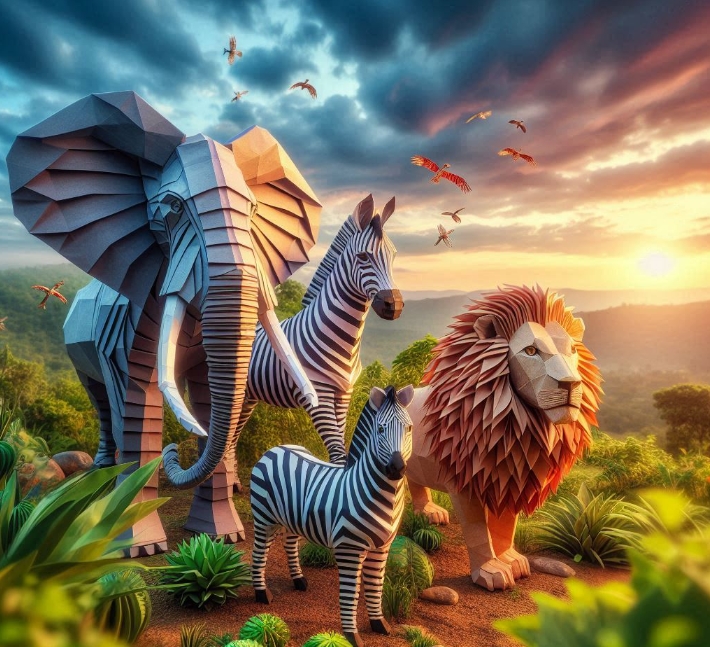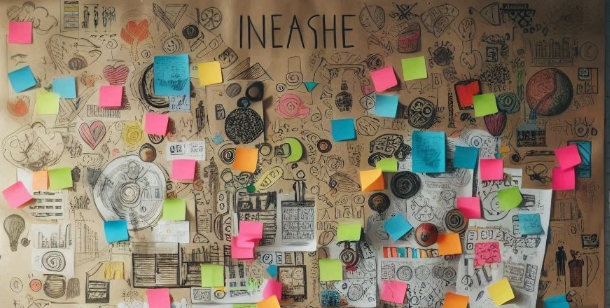
Art, the eternal mirror of human experience, has undergone a profound transformation. As we've leaped from charcoal-smeared cave walls to pixel-perfect digital canvases, the very essence of what we consider 'art' has shape-shifted. This isn't just about new tools; it's a seismic shift in how we perceive, create, and philosophize about art. Let's embark on a journey through 10 pivotal changes that have redefined the artistic landscape.
1. The Democratization of Creation: Everyone's an Artist Now
From Elite Circles to Global Galleries: - Digital tools have lowered the entry barrier to art creation - Social media platforms serve as instant, global art galleries - The line between 'professional' and 'amateur' artists blurs
Philosophical Quandary: Does universal access dilute art's value, or does it enrich our collective creative expression?
2. The Ephemerality of Digital Art: Pixels in the Wind
Permanence Gives Way to Fleeting Beauty: - Traditional art often aimed for timelessness - Digital art can be endlessly modified, shared, and even deleted - NFTs attempt to bring scarcity and permanence to digital realms
Artistic Dilemma: How does the transient nature of digital art affect its perceived value and impact?
3. The Redefinition of Originality: Remix Culture Reigns
From Singular Genius to Collaborative Creativity: - Traditional art celebrated unique, individual vision - Digital age embraces remixing, sampling, and collaborative creation - Concepts of plagiarism and homage become increasingly complex
Creative Contemplation: In a world of endless remixes, what constitutes true originality?
4. The Shift in Artistic Process: From Solitary to Social
Studio Solitude to Global Collaboration: - Traditional artists often worked in isolation - Digital platforms enable real-time, global artistic collaboration - The artistic process becomes a public performance
Social Shift: How does the public nature of digital creation change the artistic journey and its outcomes?
5. The Blurring of Art and Technology: Code as a Brush
From Pigments to Pixels: - Traditional art relied on physical media - Digital art merges creativity with technological prowess - Coding becomes a form of artistic expression
Tech Transformation: As technology becomes integral to art, how does this change our definition of artistic skill?
6. The Evolution of Audience Interaction: From Passive to Participatory
Static Viewing to Dynamic Engagement: - Traditional art was often observed passively - Digital and interactive art invites audience participation - The line between creator and consumer blurs
Engagement Enigma: How does audience interaction reshape the meaning and experience of art?
7. The Expansion of Artistic Dimensions: Beyond the Physical
From 2D Canvases to Virtual Realities: - Traditional art was confined to physical dimensions - Digital art explores 3D, 4D, and virtual reality spaces - The concept of 'space' in art becomes fluid and limitless
Dimensional Dilemma: As art transcends physical limitations, how does this alter our perception of artistic boundaries?
8. The Acceleration of Artistic Trends: From Centuries to Seconds
Slow Evolution to Rapid Revolution: - Art movements traditionally evolved over decades or centuries - Digital trends can emerge and fade in days or hours - The pace of artistic innovation reaches breakneck speeds
Trend Turbulence: In this high-speed artistic climate, how do we discern lasting value from fleeting fads?
9. The Globalization of Artistic Influence: A World Without Borders
Local Traditions to Global Fusion: - Traditional art often reflected local cultures and techniques - Digital platforms facilitate instant global artistic exchange - Styles and influences blend across cultural boundaries
Cultural Crossroads: How does global accessibility impact the uniqueness of cultural artistic expressions?
10. The Redefinition of Artistic Value: From Scarcity to Abundance
Rare Masterpieces to Infinite Reproductions: - Traditional art valued scarcity and uniqueness - Digital art can be infinitely reproduced without loss of quality - New models of value emerge (e.g., NFTs, social media influence)
Value Vortex: In a world of digital abundance, how do we assign and measure artistic worth?
The Eternal Essence: Art's Timeless Core
Amidst this whirlwind of change, it's crucial to remember: - The fundamental human need for expression remains constant - Technology is a tool, not a replacement for artistic vision - The power of art to move, challenge, and inspire endures
As we navigate this brave new world of digital artistry, we must continually question and redefine our understanding of creativity, value, and expression.
The canvas has changed, but the human spirit behind the art remains eternal. How do you see the future of art unfolding in the digital age? Will traditional and digital forms find harmony, or are we witnessing the dawn of an entirely new artistic paradigm?
Share your thoughts on this artist
american-boffin.com
bfbchamp.com
democraticcoma.com
tigrepelvar.com
charpoles.com
derbywheelblazers.com
fansfocus.net
guildnow.com
hediyeteyze.com
isprimecdn.com
kiira-korpi.net
manutd24.com
mediumtylerhenry.com
mishanghai.org
savethreestrikes.com
smilesbydavis.com
10puntos.net
band-shirt.com
icelandtrails.com
paulmarioday.com
thefunnynanny.com
Dave Tries Ballet
Buon Grande
Criacao Sites
Perry Perkins Books
Writing Essay in AU
Ka Soku
Blood is Blood Movie
Eleanor Writes Things
The Happy Prince Beirut
Town of Witless Bay
Online Igrovoi Club
Trigeminal Neuralgia - Ronald Brisman MD
Chocolate City Burlesque
Advanced Electric Scooters
W Tougei
Breadboard Maniac
Takasu App


